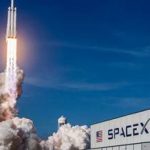SBG Systems Launches Navsight Marine Solution at Oceanology International
SBG Systems released the Navsight Marine Solution at the recent Oceanology International trade show in London. The solution consists of an Inertial Measurement Unit (IMU) available at two different performance levels (from shallow to deep water), and connected to Navsight, a rugged processing unit embedding the fusion intelligence, the GNSS receiver when selected, and all connections to external equipment such as echo-sounders, sonar, etc.
By Inside GNSS












